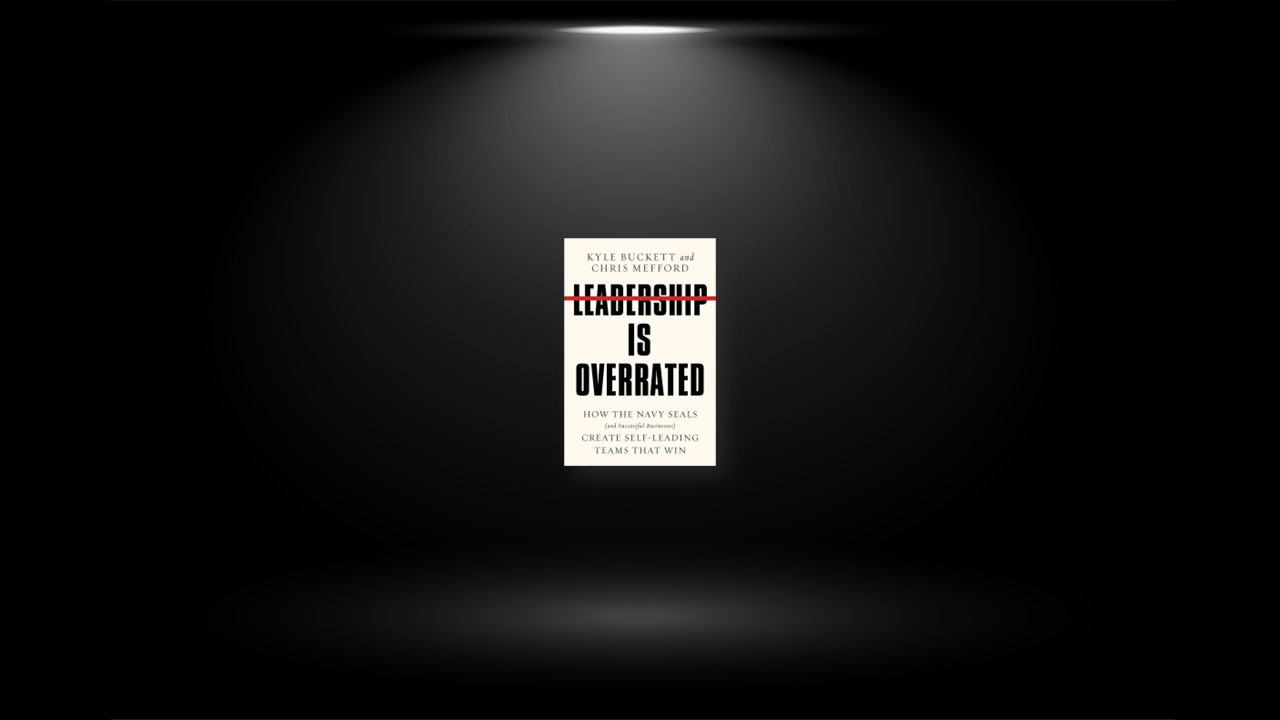Kill the Leader
It’s easy to blame the person at the top. Everyone wants to take shots at authority figures, so why pay attention to such complaints? Leadership development has typically focused on making the individual, not the team as a whole, better. All the training, educating, and seminaring we’ve done has led to an abundance of autocratic individuals who see themselves as saviors. They didn’t do this by themselves; we helped. Under the old model, the team exists, at least in the leader’s mind, to help the boss get ahead, to increase production, maximize profit, and make the leader look better.
Jim Clifton, chairman and CEO of Gallup and author of The Coming Jobs War, wrote, “What the whole world wants is a good job, and we are failing to deliver it . . . This means human development is failing, too. Most [individuals] are coming to work with great enthusiasm, but the old management practices—forms, gaps, and annual reviews—grind the life out of them.”* Management styles, which have changed very little since the late 1700s, are due to evolve with the changing face of business. The world of work is changing fast, and management needs to follow.
A true leader goes beyond mere titles and does more than fulfill a role. Leadership is a responsibility shared by everyone that involves working with the right people to identify their strengths and help develop them for the organization’s betterment. Doing this job well takes emotional capital, which is one reason why many bosses are so bad at it.
If leadership is overrated, then what comes next? In a sense, we have to kill what we’ve understood a leader to be so that another, better organizational model can emerge. It is no longer leadership that saves a company or defines a movement—it’s the culture—and that’s something we all can have a hand in creating. If we don’t step up and change things, we may be those bad bosses everyone is complaining about. At best, we will have submitted to another autocrat; at worst, we will have become the leaders who ought to be “killed.”
Change from the Inside Out
The single most precious resource of any organization, regardless of its size or industry, is the talent inside its walls. The success of any company depends on finding remarkably talented people and keeping them. For years, we thought the key to this issue was training leaders to be better, asking them to improve themselves and their tactics, expecting the impact would trickle down to everyone else. It didn’t. As a result, our organizations continue to struggle with a disconnection between management and the people they claim to lead. Quite frankly, many businesses just aren’t that fun to work at. Leadership alone cannot fix the problem of retention—we’ve tried. What we need are team members excited about their work and empowered to create change. Such a shift only comes with a complete transformation of the work culture itself.
When people enjoy their jobs, they are happier, don’t show up late, don’t steal, and work harder—all of which translates into economic success. Bad organizations neglect this important component to their own success and do so at their own peril. And yet, the negligence of talent persists. As with the teacher scolding the outspoken teenager, there’s too much comfort at risk to consider upsetting the proverbial apple cart. Nonetheless, when we ignore the culture our allowances are creating, we run the greater risk of continuing to create an unremarkable organization.
When most people hear talk of “corporate culture,” they think about perks and benefits. Everyone loves talking about better environments, but few know how to create them. Great culture is not about gyms, coffee, or laundry service. It’s the bar you set for what is possible, the promise of integrity and excellence that will attract both the right team members and customers.
Culture is the heartbeat of every organization, the result of intentional collaboration and innovation. It’s what makes conflict meaningful and productive for everyone involved—the desire to protect what you’ve created together to make it even better. If you’re not the one ultimately responsible for the direction in which an entire organization goes, join the crowd. That’s most of us. All of us have someone to report to, someone we are accountable to, someone who needs something from us. In that sense, we’ve all got a boss, whether it’s a manager, a shareholder, or a partner we need to please. We’ve all got someone to look to, someone who’s looking at us, and someone else who, we think, holds the key to our problems.
But where does it begin? With you.
Creating Cultures That Win
The SEAL community is very different from a traditional military community. Even though there are ranks, file order, and discipline, you have to assemble those. If the guys don’t trust a leader, it won’t play out like traditional military rank and file. If you don’t build real trust, you will be removed from your position because it can be detrimental to the mission. Rank isn’t a given.
The SEALs do things differently than personnel in other areas of the navy, and that requires deep confidence and accountability built into the team. Leadership was happening everywhere. Each SEAL was taking greater ownership of what was in front of him, and they all ended up being more productive as a result. There was no single leader whose removal or death would have devastating effects on the team. They had effectively “killed the leader,” and the mission continued. They got more done because the structure of the organization had become more agile and purpose driven. Why they were there was clear, as was what they had to do. And who had to do it? Well, that was everyone.
Because their culture allowed them to replace one leader with another, everyone stepped up, including the men at the top. At that point, titles didn’t matter. Leadership, as traditionally understood, was more or less defunct. What mattered was that they had a mission and a culture to support it. Not only did they make an impact on the battlefield, but they made it out alive as a result of the level of maturity reached by each guy.
Leadership didn’t do that. Culture did.
Culture reinforces mission. On SEAL mission, the team members kept lines of communication open, they had a distinct purpose, and their approach was clear. Creating a winning culture, as it happens, isn’t leaving beers in the department fridge every Friday. It’s not a Ping-Pong table in the break room or company picnics. Creating culture goes deeper than offering a repetitive system of carrots and sticks. It’s about creating something worth belonging to, something you just might die for (or at least be willing to sacrifice for).
You probably don’t need to take a team of the world’s best fighters and turn them into public relations ambassadors, but you can still make a dramatic shift in your organization. You can change an unhealthy organization into something world-class or purposefully build one that wins from the start. As with any serious strategy, shifting a whole culture involves a system in which your team feels empowered, united, trusted, and valued.


